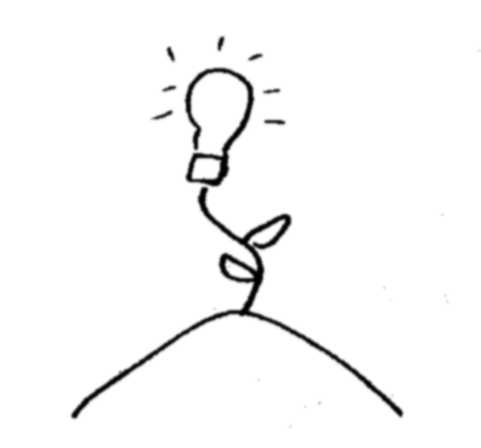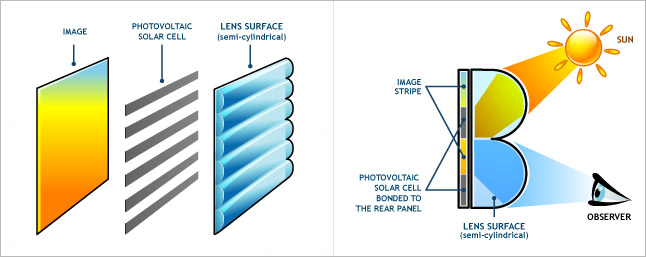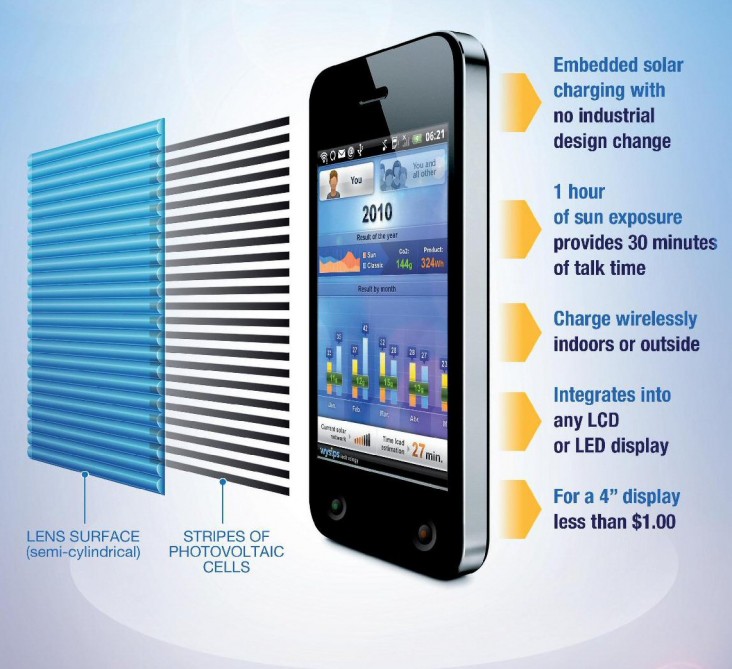Wysips. What you see is photovoltaic surface.
Wysips, based in Lambesc, a small village in the South of France, is developing a transparent solar film technology that can be seamlessly integrated onto the screen of a smartphone -- and replace the need for chargers and wall sockets.
Wysips envisions implementing the solar technology on a wide range of applications from billboards to sailboats, but first development efforts are focusing on mobile phones and LCD screens.
The Wysips solar film is not actually transparent, but appears transparent to the user by implementing lenticular printing, an optical technology which shows different images depending on the observer's position and is used often to create 3D effects and animations.
The Wysips product consist of two layers mounted onto the smartphone screen (or other object):
- A film of photovoltaic strips, and
- A thin flexible lenticular film, by which the user sees the screen or image from one angle, and the PV layer from another angle.
The Wysips technology can either be a flexible or rigid film with a thickness of .1-.5 mm, and for smartphones, will cost about 1 euro per screen, and fully charge in 6 hours of sunshine (one hour will generate enough power to talk for about 30 minutes). The film can even charge in artificial light for people working indoors, but it takes about 5 to 10 times longer.
Wysips has received private and public funding, including 2.6 million from OSEO, ADEME, and the PACA region. They won 1st place in CTIA's 2011's Emerging Technology - Green Telecom and SMART Energy competition, and recently joined a "Smart 4G Tablet" collaborative, aiming to develop the first self-powered 4G tablet.
As Ludovic Deblois, co-founder and president of Wysips, describes, "If we move quickly, we could have the same success as the touch screen [had] a few years ago. We are aware of the potential of our technology".



